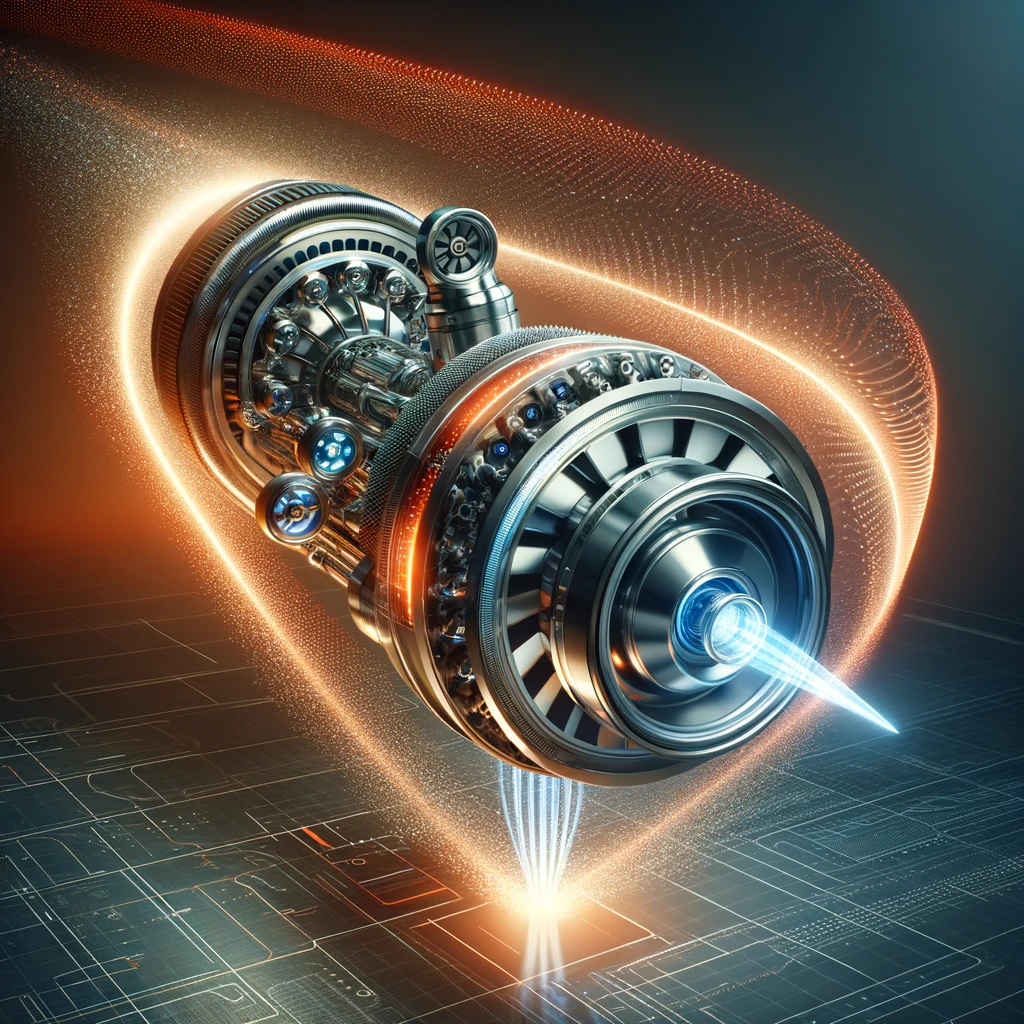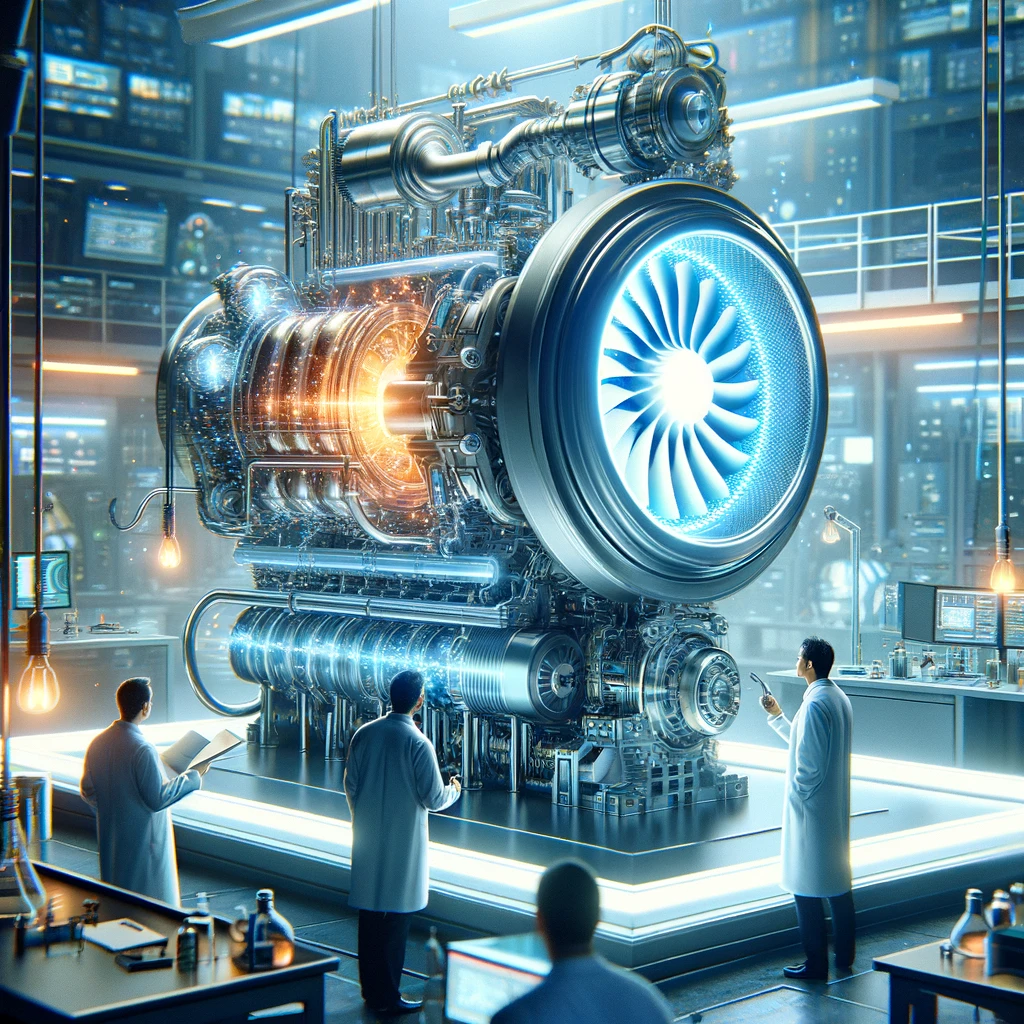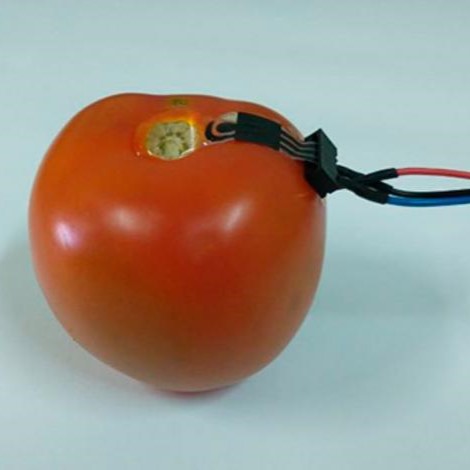From Technical Institute of Physics and Chemistry 05/02/24

The newly-developed heat engine is a thermophotovoltaic cell that captures high-energy photons from a white-hot heat source and converts them into electricity with over 40% efficiency — a performance better than that of traditional steam turbines.
A thermophotovoltaic cell (size 1 x 1 cm) mounted on a heat sink designed to measure the TPV cell efficiency. Image credit: Felice Frankel.
More than 90% of the world’s electricity comes from sources of heat such as coal, natural gas, nuclear energy, and concentrated solar energy.
For a century, steam turbines have been the industrial standard for converting such heat sources into electricity.
On average, steam turbines reliably convert about 35% of a heat source into electricity, with about 60% representing the highest efficiency of any heat engine to date. But the machinery depends on moving parts that are temperature-limited.
Heat sources higher than 2,000 degrees Celsius, such as the new thermal battery system, would be too hot for turbines.
In recent years, scientists have looked into solid-state alternatives — heat engines with no moving parts, that could potentially work efficiently at higher temperatures.
“One of the advantages of solid-state energy converters are that they can operate at higher temperatures with lower maintenance costs because they have no moving parts. They just sit there and reliably generate electricity,” said Professor Asegun Henry, a researcher in the Department of Mechanical Engineering at MIT.
Thermophotovoltaic cells (TPV) offered one exploratory route toward solid-state heat engines.

Much like solar cells, TPV cells could be made from semiconducting materials with a particular bandgap — the gap between a material’s valence band and its conduction band.
If a photon with a high enough energy is absorbed by the material, it can kick an electron across the bandgap, where the electron can then conduct, and thereby generate electricity — doing so without moving rotors or blades.
To date, most TPV cells have only reached efficiencies of around 20%, with the record at 32%, as they have been made of relatively low-bandgap materials that convert lower-temperature, low-energy photons, and therefore convert energy less efficiently.
In their new TPV design, Professor Henry and colleagues looked to capture higher-energy photons from a higher-temperature heat source, thereby converting energy more efficiently.
The new cell does so with higher-bandgap materials and multiple junctions, or material layers, compared with existing TPV designs.
The cell is fabricated from three main regions: a high-bandgap alloy, which sits over a slightly lower-bandgap alloy, underneath which is a mirror-like layer of gold.
The first layer captures a heat source’s highest-energy photons and converts them into electricity, while lower-energy photons that pass through the first layer are captured by the second and converted to add to the generated voltage.
Any photons that pass through this second layer are then reflected by the mirror, back to the heat source, rather than being absorbed as wasted heat.
The researchers tested the cell’s efficiency by placing it over a heat flux sensor — a device that directly measures the heat absorbed from the cell.
They exposed the cell to a high-temperature lamp and concentrated the light onto the cell.

They then varied the bulb’s intensity, or temperature, and observed how the cell’s power efficiency — the amount of power it produced, compared with the heat it absorbed — changed with temperature.
Over a range of 1,900 to 2,400 degrees Celsius, the new TPV cell maintained an efficiency of around 40%.
“We can get a high efficiency over a broad range of temperatures relevant for thermal batteries,” Professor Henry said.



